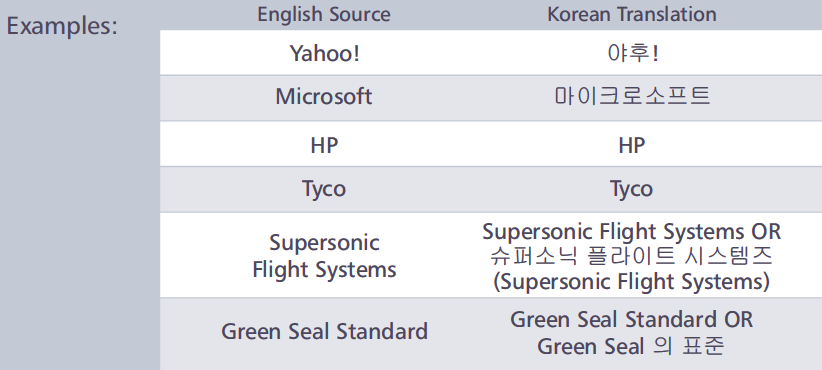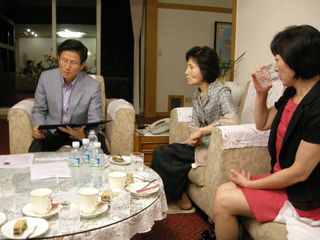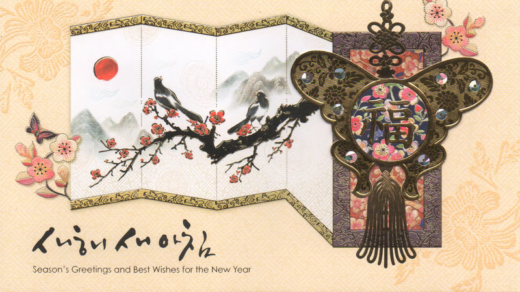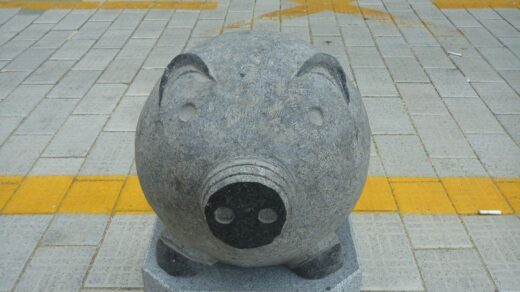This article provides useful tips for creating professional-level Korean translations.
TABLE OF CONTENTS
- Dimensions
- Line breaks
- Capitalization
- Dialects
- Fonts
- Measurements
- Dates
- Numbers
- Punctuation and spacing
- Companies, brands, and other corporate proper nouns
- Names of people
- Technical words
- Addresses
- Job titles
- Words written in Chinese characters
Estimated reading time: 9 minutes

Dimensions
Korean does not generally take more or less space on a page than English.
However, Korean fits more neatly into vertical spaces than English, so formatting can be a challenge when translating Korean documents into English that are full of tables and forms. Likewise, translating into PowerPoint can be quite time-consuming.
Korean Translation Best Practices Tip: Leave room in your budget for a formatting fee on translations with complicated forms, tables and graphs. PowerPoint files also require additional charges sometimes.
Line breaks
When typesetting Korean, it does not matter whether a word is split at the end of the line as long as the paragraph is right- and left-justified. In this case, it is not necessary to place a hyphen to indicate the split word. If the paragraph is not right-justified, don’t split words between lines and make sure they stay whole.
When typesetting titles in Korean, it would be best to try to keep whole words together on the same line, but even there, you’d be hard-pressed to find a Korean reviewer that will consider it a serious issue even if words are split. Again, the key here is to right- and left-justify the text.
Korean Translation Best Practices Tip: As a rule of thumb, Korean documents will look better and be easier to review if you right- and left-justify the text and do not worry about line breaks in the text.
Capitalization
Korean does not use capitalization and so English capitalization cannot be represented in Korean.
Korean Translation Best Practices Tip: If all-caps was used in a section of English for emphasis, this should be recreated in the Korean using underlining, italics or bold font.
Dialects
Standard Korean used in Seoul is the only acceptable form of written Korean for 99.9% of translation projects.
Of course, the North Koreans would disagree with this and the dialects of South and North Korea have changed a lot over the years such that they are really two different dialects now. But considering that there is virtually no translation being commissioned for the North Korean market, it is safe to ignore the North Korean dialect in all cases.
In South Korea, there are three major regional dialects, mostly differing from the Seoul standard in terms of spoken accent, but none of these would be considered a proper form of written Korean for any kind of business, legal or technical purpose.
Clients will sometimes ask that a particular translation be matched to a specific overseas Korean community, such as Korean-Americans or Korean-Australians, but regardless of the way overseas Koreans have come to mix their spoken Korean with the local language, the only acceptable written version of Korean in these communities would also be the Seoul standard.
This keeps things simple since it means that there is only one dialect of Korean that you need to be concerned about for your Korean translation project.
Fonts
The fonts of Western European languages are single-byte. But like Japanese and Chinese, Korean uses double-byte fonts because of the huge number of possible combinations of characters.
Therefore, the file sizes for Korean fonts are always MUCH larger than for Western European languages and the Korean fonts are not always compatible in all platforms and software. Fortunately, the English version of Microsoft Office has fully supported Korean since version 2000 so Word files seldom present difficulties.
The following is a table of four main Korean fonts installed standard with Microsoft Office. The most common of these is Batang.

Measurements
The metric system is used in Korea and so it is often a good idea to convert. Unusual measurement names are often just left in English.

Dates
Korean months of the year are denoted only by numbers (Month 1, Month 2, etc.) and the sequence of writing dates is [year], [month], [day].

Numbers
Korean uses the same number system that we use in English. However, it also has several native number units that are used commonly. Therefore, translations of numbers from English to Korean can look wrong if not properly understood.

Punctuation and spacing
Korean generally uses the same punctuation and symbols as we use in English.
Sentence spacing is also similar to English. However, one notable exception is the spacing around parenthesis. In some cases, there should not be a space between a parenthesis and the nearest character outside it; other times there is a space. The rules for it are based on Korean grammatical rules which I won’t try to explain here. In many cases, it will even look inconsistent when it is really just fine.
Korean Translation Best Practices Tip: Clients often ask me why the symbol “&” wasn’t translated in English> Korean jobs. However, the symbol “&” is an acceptable representation in Korean of the English word “and”, just like in English!
Korean Translation Best Practices Tip: Correct spacing in Korean around parenthesis often looks funky and inconsistent to English speakers. Feel free to bug your linguist for confirmation if you feel uncomfortable with how it looks, but expect to get a response back saying it’s OK
Companies, brands, and other corporate proper names
Translate to Korean if a well-known Korean version exists. Otherwise, leave in English or translate/transliterate it and then put the English in parentheses after.

Names of people
Just leaving English names in English is the simplest method. It is also perfectly acceptable. Some translators prefer to transliterate names into Korean and then put the English name in parenthesis immediately after the first instance.

Korean Translation Best Practices Tip: Koreans often have a preferred spelling of their name in English. If available, use it. Otherwise, it is best to follow standard rules when transliterating from Korean to English.
Technical words
Most English technical words have Korean equivalents. If they don’t, then the most common convention is to transliterate them into Korean and then put the English word in parenthesis immediately after the first instance. In some cases, if the the translator is concerned that the Korean word may not be as easily recognizable to a reader who is likely familiar with the terminology in English anyway, he may even just leave the word in English.

Addresses
Addresses in Korea are written in nearly reverse order from English. The following example demonstrates.

In most documents, it’s best to just leave the address in English since the US post office would never deliver a letter to an address written in Korean. However, on business cards, I’ve found that most clients prefer to see the Korean side of their business card written fully in Korean. Since the English on the back of the card will have the correct English address anyway, we generally go ahead and translate the business card address to Korean.
Korean Translation Best Practices Tip: The two Chinese characters in the address above denote “state” and “city”, respectively and I think including these characters makes the address look a little classier. It’s certainly not required though.
Job titles
Some job titles are tougher to translate than others. It often makes sense to provide a Korean translation and then leave the corresponding English in parenthesis after the first instance. In particular, due to the difference in Korean corporate structure, top-ranking job titles can be particularly tough, with “director” having a variety of possible translations depending on the situation.

Korean Translation Best Practices Tip: When assigning us to translate a business card, please provide as much context as possible regarding the job title. Don’t assume an easy, direct translation exists.
Words written in Chinese characters
It it highly unlikely that a linguist will deliver an English>Korean translation that includes a lot of Chinese characters. However, from time to time, a particular Korean word’s meaning could be difficult to understand or even have a homonym with which it may be confused in the context. In such cases, the translator may write the word with Chinese characters in parenthesis after the Korean word so that readers can get the full and clear meaning of the word.




